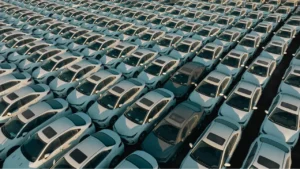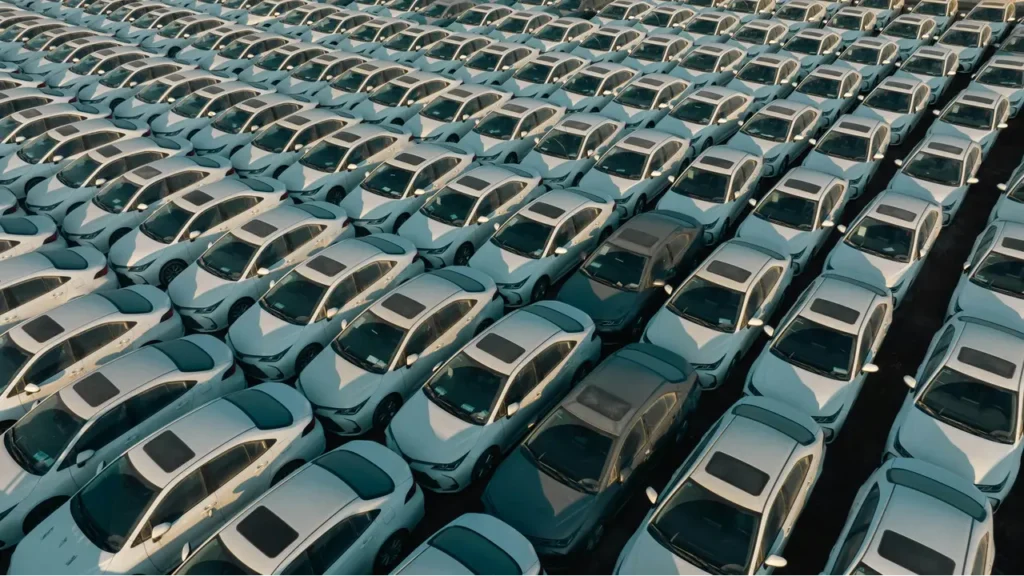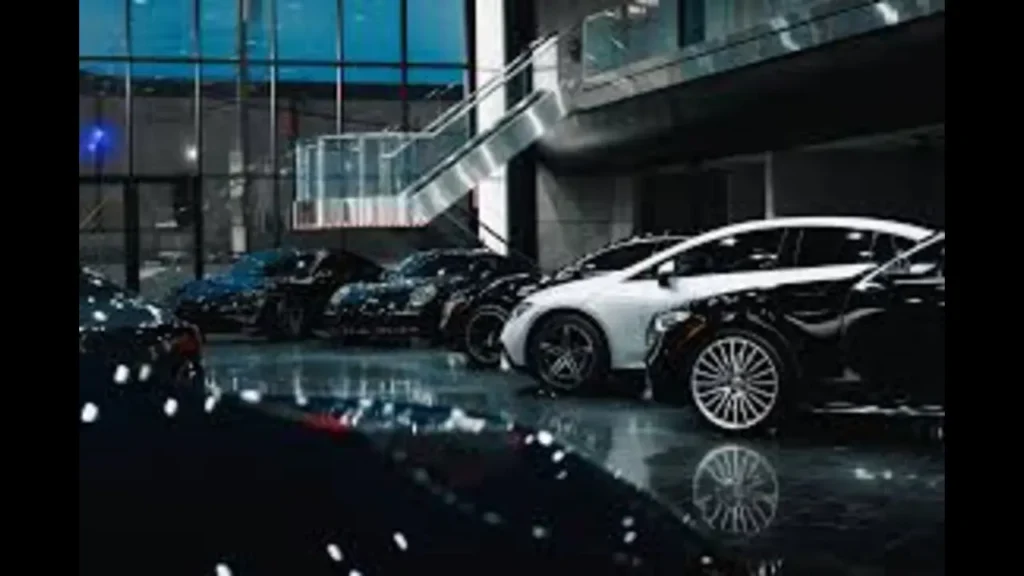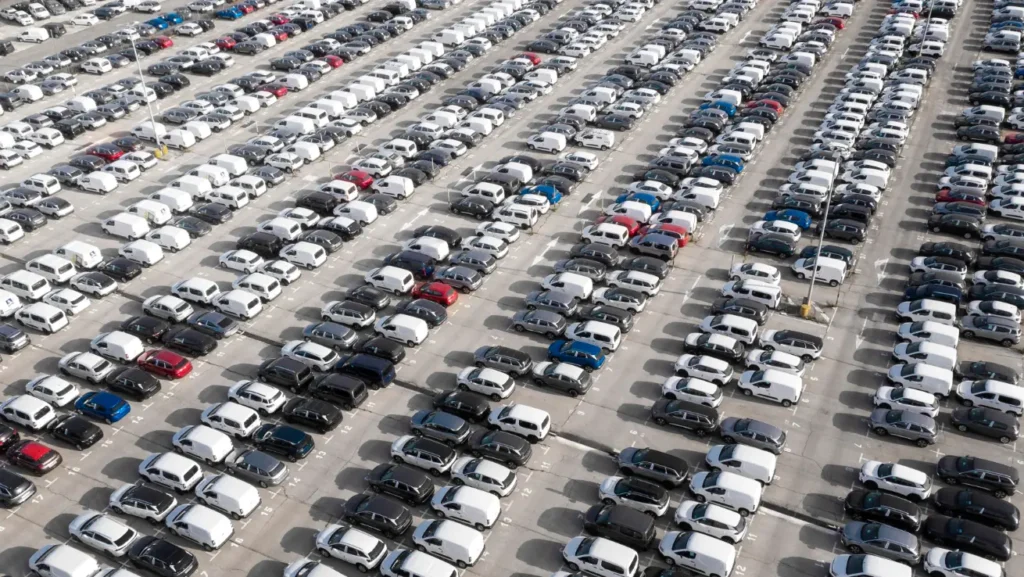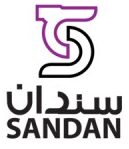Introduction
Buying a car in Oman involves a unique combination of market dynamics, environmental conditions, and regulatory steps that differ from other regions in the Gulf. The process extends beyond comparing prices or test-driving a few vehicles. It requires a clear understanding of how Oman’s used car market operates, what distinguishes a GCC-spec vehicle from imported ones, and how legal ownership transfers are handled through the Royal Oman Police (ROP). For many buyers, particularly those considering used cars, careful inspection, document verification, and awareness of long-term costs can prevent unexpected financial or legal complications.
The Omani automotive landscape is shaped by the country’s climate, the prevalence of imported vehicles, and a well-developed local ecosystem for car servicing and parts. The existence of industrial clusters like Sandan plays a vital role in ensuring that buyers have access to reliable maintenance, spare parts, and professional inspection services. These support systems help used car owners sustain the value and performance of their vehicles in Oman’s demanding road and temperature conditions.
This guide explores each stage of the car-buying process in Oman with the depth required to make informed decisions. It highlights essential market insights, financial considerations, inspection protocols, and the local infrastructure that supports vehicle ownership.
Key Takeaways
- Oman’s car market is heavily influenced by imported vehicles and climate-specific needs.
- Understanding GCC vs imported specifications helps avoid costly maintenance issues.
- Legal compliance through the Royal Oman Police (ROP) ensures a secure transaction.
- Local industrial zones like Sandan support the ecosystem of servicing and spare parts.
- A structured inspection and documentation process is crucial for used car purchases.
Table of Contents
Understanding the Omani Used-Car Market
Oman’s used-car market presents one of the most diverse inventories in the Gulf region, blending domestic and imported models. Many vehicles originate from the United States, Japan, or the UAE, contributing to price variations and differences in technical specifications. GCC-spec vehicles, designed for regional heat and dust conditions, tend to hold higher resale value and are often easier to service locally. Imported cars, though often cheaper, can present challenges in spare parts compatibility or warranty claims.
Private sellers, dealerships, and online marketplaces represent the three main sources of used cars. Private sales dominate the market due to competitive pricing, while authorized dealerships appeal to those seeking verified service history and post-sale assurance. Online platforms such as OpenSooq, DubiCars, and YallaMotor have grown popular for browsing wide inventories, yet they also demand extra vigilance to avoid misrepresented listings or vehicles with concealed accident history.
Demand for used cars in Oman remains consistent, particularly in Muscat, Sohar, and Salalah, where urban mobility and expatriate turnover drive resale activity. SUVs and pickup trucks maintain strong demand because of Oman’s mixed terrain, while compact sedans attract buyers focused on fuel efficiency and lower maintenance.
Pricing reflects multiple factors: age, mileage, model popularity, and whether the vehicle adheres to GCC specifications. Buyers often find significant savings when opting for vehicles aged between four and eight years, as these models have already absorbed most of their depreciation but remain serviceable for several more years.
For expatriates, the market offers flexibility, yet legal transfer procedures and insurance coverage must be finalized before any handover. Understanding these dynamics is key to balancing affordability, reliability, and long-term value when entering Oman’s automotive market.
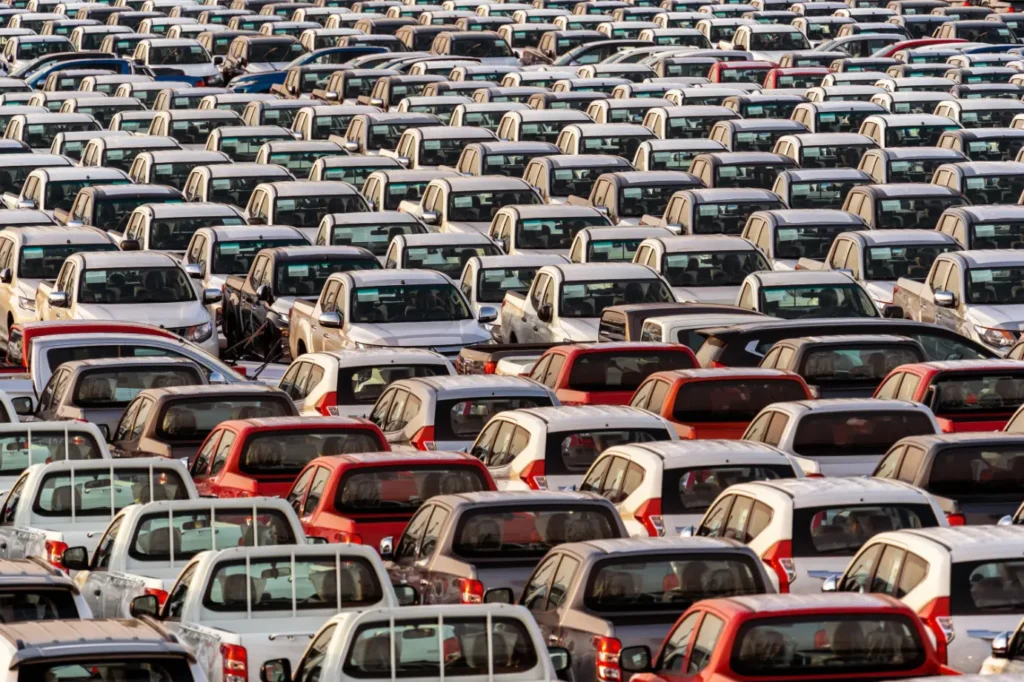
Pre-Purchase Planning: Needs, Budget, and Use-Case
Effective car buying in Oman begins with precise self-assessment. Determining daily needs—such as commuting distances, off-road travel, or family requirements—defines the vehicle category best suited to those conditions. Compact sedans provide efficiency for city driving, while SUVs and four-wheel drives offer resilience for mountainous or desert routes. Pickup trucks remain popular among small business owners needing versatility for cargo and transport.
Budgeting extends far beyond the sticker price. Buyers must account for insurance, registration, fuel, maintenance, and periodic inspection costs. Fuel remains affordable in Oman, but maintenance can become expensive for non-GCC-spec imports due to part scarcity or higher servicing charges. Establishing a total cost of ownership helps predict long-term financial obligations and prevents surprises.
Financing options for used cars in Oman typically involve bank loans, credit unions, or dealership installment plans. Banks often require a minimum down payment of 20 to 30 percent, with interest rates varying by credit score and car age. Loans are generally limited to vehicles under eight years old, making age verification essential before applying.
Insurance decisions also play a major role in budgeting. Third-party coverage is mandatory, while comprehensive plans offer broader protection against theft, fire, or damage. Premiums vary depending on car value and driver profile but tend to start from around OMR 100 annually for compact models.
The Omani climate further affects financial planning. Vehicles with robust air conditioning, rust-resistant coatings, and durable cooling systems are worth the investment for long-term reliability. Planning according to intended usage, environmental challenges, and realistic expenses ensures that each purchase remains a sustainable decision rather than an impulsive one.
Specification Matters: GCC-Spec vs Imported (US/Other) Vehicles
Understanding the technical differences between GCC-spec and imported vehicles is one of the most crucial steps before purchasing a car in Oman. GCC-spec cars are engineered to handle regional conditions—intense heat, fine sand, and extended highway use. These models typically include upgraded cooling systems, stronger air conditioning, dust-proof filtration, and corrosion protection suitable for Oman’s climate. Manufacturers also design regional warranty coverage and parts availability around GCC standards, making these vehicles more convenient to service.
Imported vehicles, particularly from the United States or Japan, often attract buyers because of lower purchase prices and advanced features. However, they come with potential drawbacks. The cooling systems in non-GCC cars may not withstand extreme summer temperatures, and spare parts can be harder to source. Electrical components or software may not align with regional service tools, increasing maintenance time and cost. Some imported cars are also rebuilt or salvaged after accidents, so verifying the Vehicle Identification Number (VIN) and requesting a full history report are essential actions.
From a resale perspective, GCC-spec vehicles maintain stronger value due to buyer confidence and compatibility with local service infrastructure. Imported cars, while initially appealing, can lose resale attractiveness quickly once buyers recognize their maintenance risks.
Before purchase, confirming whether a vehicle adheres to GCC specifications can be done by checking the VIN tag, owner’s manual, and manufacturer sticker, which should list “GCC” or “Middle East” as the market. For those who choose to import, working with professional inspection services in Oman ensures modifications meet safety and environmental regulations.
A careful comparison of specification types allows buyers to balance short-term affordability with long-term cost efficiency, aligning purchase decisions with Oman’s operational realities.
Inspection Checklist: Mechanical, Structural, and Documentation
Every used-car purchase in Oman should begin with a comprehensive inspection that covers both mechanical integrity and legal documentation. Many vehicles appear visually clean but conceal mechanical wear or structural repair. The most reliable approach combines professional diagnostics with an informed visual check.
The exterior inspection begins with panels and paintwork. Irregular color tones, misaligned doors, or inconsistent reflections can reveal past accident repairs. Checking the underside for rust or frame damage is especially important for vehicles exposed to coastal areas. Tyres, suspension joints, and shock absorbers should be examined for uneven wear, which may indicate alignment issues or past impacts.
Under the hood, critical areas include engine oil condition, coolant color, belts, hoses, and battery terminals. A vehicle that overheats during test drives might indicate insufficient cooling capacity—common among imported models not adapted for Omani temperatures. Listening for ticking or knocking sounds when idling helps detect deeper mechanical faults.
Documentation verification is equally vital. The buyer should review the mulkia (vehicle ownership card), valid insurance papers, and previous service history. The VIN number on the chassis must match all documents. If the car was imported, requesting customs clearance papers and accident reports provides transparency.
Electronic diagnostics performed at authorized garages in Sandan or other industrial hubs can detect hidden engine or transmission faults not visible to the eye. A modest investment in professional inspection can prevent high repair expenses later, especially in a market where many used cars originate from overseas auctions.
By combining physical examination with legal verification, buyers safeguard their investment and reduce the risk of inheriting unresolved liabilities.
Legal Ownership Transfer & Registration Process in Oman
Ownership transfer in Oman follows a structured process overseen by the Royal Oman Police (ROP). The transaction becomes legally binding only once the vehicle is registered in the buyer’s name and the updated mulkia is issued. Both seller and buyer must appear at an ROP vehicle registration office or approved service center with the original ownership certificate, valid insurance, and national identification cards or resident permits.
Before transfer, the vehicle undergoes a routine inspection to confirm its roadworthiness. Any outstanding fines or traffic violations must be cleared by the seller. The ROP then verifies the vehicle’s chassis number, engine number, and registration history. Once verified, the buyer pays the transfer fee, which usually ranges from OMR 20 to OMR 30, depending on vehicle category.
Insurance plays a key role in this stage. The vehicle cannot be registered without an active policy in the new owner’s name. Comprehensive insurance is recommended, especially for imported vehicles or those with higher repair costs. After registration, the ROP issues a new mulkia showing the updated ownership details, valid for one year.
Foreign residents must ensure that their residence visa and driver’s license are valid during the transaction. Transferring ownership without proper documentation can result in fines or temporary suspension of registration.
Buyers are encouraged to complete the process directly through ROP channels rather than informal intermediaries. Retaining official receipts and transaction records provides legal proof of ownership, protecting against future disputes. A transparent transfer ensures that the car can be insured, maintained, and resold without regulatory complications.
Budgeting for After-Purchase Costs in Oman
Once a used car has been purchased, the ongoing expenses of ownership often define its true value. Oman’s automotive environment offers relatively low fuel prices, yet other recurring costs—maintenance, insurance renewals, and spare-part replacements—can vary widely depending on the vehicle’s age, make, and specification.
The most consistent post-purchase cost is maintenance. Routine servicing for GCC-spec vehicles is affordable because parts and expertise are readily available across Oman. Imported models, particularly those with US or Japanese specifications, can require special components that must be ordered abroad, increasing downtime and cost. Engines, cooling systems, and air conditioning units are especially susceptible to strain under Oman’s summer heat, making timely servicing essential.
Spare-parts availability is a central advantage of Oman’s industrial ecosystem. Sandan Industrial City, a major automotive hub, houses workshops, authorised distributors, and aftermarket retailers who provide parts for multiple brands under one roof. Buyers who choose cars with strong parts representation in Sandan or Muscat save both time and money during repairs.
Insurance renewal fees also influence long-term budgeting. Comprehensive coverage offers the greatest protection, but annual premiums depend on vehicle category and driver profile. Typical rates range between OMR 100 and OMR 250 for private vehicles. Registration renewals, mandatory annual inspections, and periodic tyre or battery replacements add to predictable yearly expenses.
Depreciation completes the financial picture. On average, sedans lose value faster than SUVs in Oman, yet models with reliable service records can maintain higher resale prices. Keeping all service receipts, warranty claims, and inspection reports significantly increases resale confidence.
A realistic budget accounts for 5 to 10 percent of the car’s purchase price annually for maintenance and insurance combined. Recognising these costs from the beginning turns a short-term transaction into a manageable long-term commitment.
Choosing the Right Car Type for Oman Conditions
Selecting a car suited to Oman’s terrain and climate is more than a matter of preference; it affects reliability, comfort, and safety. The country’s diverse geography ranges from urban highways to mountain passes and desert routes, creating distinct performance expectations for different vehicle categories.
Sedans are common among city commuters due to low fuel consumption and ease of parking. Their compact design makes them ideal for Muscat’s dense traffic corridors. SUVs dominate the mid-to-high-income segment, offering stronger suspension, higher ground clearance, and cooling systems designed to withstand continuous air-conditioning use. For frequent travel between cities or weekend desert excursions, four-wheel drives remain the most practical option.
Pickup trucks play a dual role in Oman’s market, serving both commercial and recreational purposes. Their durability and load capacity suit construction professionals and small businesses. Meanwhile, electric and hybrid models are emerging, though adoption is gradual due to limited charging infrastructure and high battery-replacement costs.
Climate-specific considerations are non-negotiable. Cars must possess effective cooling systems, rust protection, and heat-resistant interiors. Buyers often underestimate the importance of these attributes, leading to frequent overheating or interior wear. Vehicles manufactured for GCC markets are tested to endure desert conditions, making them a safer long-term choice than imported equivalents not configured for the region.
Brand reputation also shapes selection. Toyota, Nissan, Mitsubishi, and Lexus models have a proven maintenance network in Oman, offering reliable parts supply through clusters like Sandan. Imported luxury brands may provide advanced technology but can incur higher servicing costs and longer repair cycles.
Matching vehicle type to driving environment reduces operating stress and preserves resale value, ensuring the car performs consistently throughout Oman’s demanding conditions.
Importing a Vehicle into Oman
Importing a car into Oman appeals to buyers seeking specific models, newer technologies, or lower upfront prices. Yet the process demands attention to regulation, cost structure, and post-import adjustments. Vehicles commonly arrive from the United States, Japan, or the UAE through international auction or dealership networks.
The total import cost includes the vehicle’s purchase price, international shipping, customs duty (usually 5 percent of the assessed value), and 5 percent VAT. Port and documentation fees may also apply. Cars older than seven years often face restrictions or additional inspection requirements before registration. All imports must pass a roadworthiness test conducted by the Royal Oman Police, verifying safety standards and emissions compliance.
Beyond legal compliance, technical compatibility is a practical challenge. Non-GCC vehicles require modifications such as stronger cooling systems, adjusted lighting, and suitable navigation firmware to operate effectively in Oman’s environment. Importers who neglect these adaptations face frequent maintenance issues and shorter vehicle lifespan.
Registration follows the same steps as domestic transfers but includes customs clearance documents and a translated invoice. Buyers should confirm that the car carries a “clean title” with no outstanding finance or major accident history abroad. Platforms offering history reports and VIN decoding help validate authenticity before shipment.
Importing can yield cost savings, but only when managed through reputable logistics and inspection partners. Many buyers turn to Omani service hubs, including workshops within Sandan Industrial City, to perform adaptation checks immediately after the vehicle’s arrival. This ensures the car meets local performance expectations while maintaining legal safety compliance.
Frequently Asked Questions (FAQ)
What is the maximum age of a used car that can be registered in Oman?
Cars older than ten years may face restrictions or additional inspections before being registered, depending on their condition and emissions compliance. The Royal Oman Police (ROP) evaluates vehicles individually, focusing on safety standards and roadworthiness.
Do private-seller transactions require registration through the Royal Oman Police?
Yes. All car ownership transfers, whether from a dealership or private seller, must be completed through the ROP to issue a new mulkia (vehicle registration card). The transaction becomes legally valid only after the ROP system updates the ownership record.
Is it better to buy a US-spec or GCC-spec car in Oman?
GCC-spec cars are more suitable for Oman’s heat and terrain. They feature enhanced cooling systems and are supported by local parts availability. US-spec imports may appear cheaper initially but often incur higher maintenance costs due to limited part compatibility.
How much does insurance typically cost for a used car in Oman?
Basic third-party coverage starts at around OMR 100 annually, while comprehensive policies for mid-range sedans and SUVs average between OMR 150 and OMR 250. Rates depend on car value, age, and driver record.
Can expatriates legally own vehicles in Oman?
Yes. Expatriate residents with valid residence visas and Omani driving licenses can own vehicles. Most expatriates can register up to three vehicles under their name, provided documentation and insurance are in order.
Conclusion
Purchasing a car in Oman—especially a used one—demands thorough preparation and knowledge of the market’s structural and environmental factors. The process involves evaluating vehicle specifications, verifying documents, understanding ownership transfer procedures, and anticipating long-term costs that extend beyond the initial purchase.
Oman’s used-car market is rich in variety but requires discernment. Buyers who prioritise GCC-spec vehicles gain a lasting advantage in reliability, cooling performance, and maintenance affordability. Those drawn to imported options should account for potential adaptation expenses and limited parts availability. In all cases, conducting professional inspections and verifying VIN records remain the strongest safeguards against unforeseen issues.
The Royal Oman Police’s transparent registration system ensures legal security once the process is followed correctly. Equally important, the presence of industrial clusters such as Sandan strengthens the ecosystem supporting vehicle ownership. With its concentration of spare-parts suppliers, service centers, and automotive experts, Sandan provides tangible value to car owners seeking reliable maintenance and long-term cost efficiency.
A successful car purchase in Oman rests on informed decision-making. When buyers combine technical awareness with procedural diligence, they gain not only a vehicle suited to their lifestyle but also financial stability and peace of mind throughout ownership.



